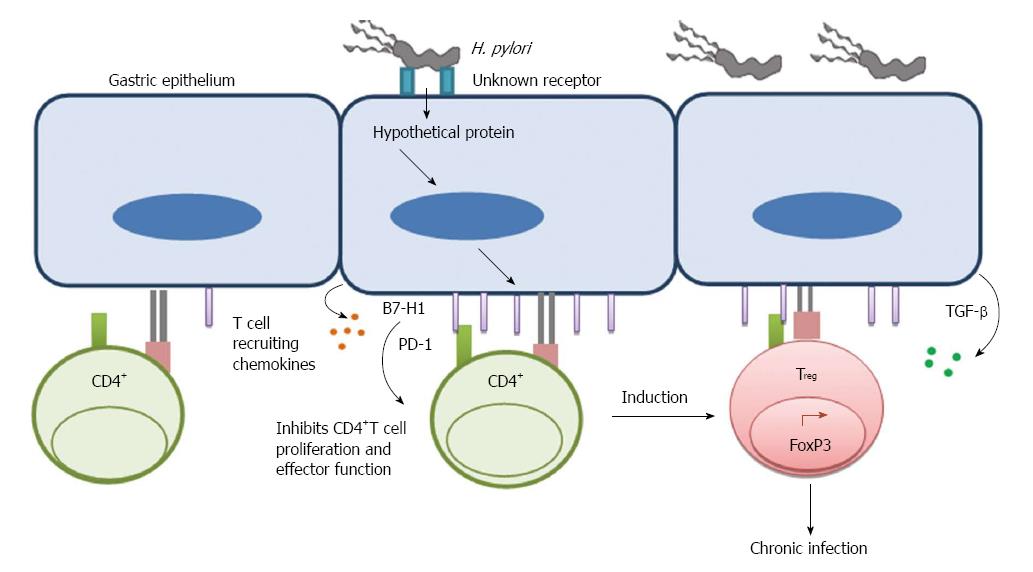Copyright
©2014 Baishideng Publishing Group Inc.
World J Gastroenterol. Sep 28, 2014; 20(36): 12753-12766
Published online Sep 28, 2014. doi: 10.3748/wjg.v20.i36.12753
Published online Sep 28, 2014. doi: 10.3748/wjg.v20.i36.12753
Figure 1 Helicobacter pylori uses gastric epithelial cells as a mediator to inhibit T cell function.
Upon binding to an unknown receptor on GEC Helicobacter pylori translocate a hypothetical protein, which causes induction of B7-H1 on GEC. Induction of T cell co-inhibitory molecule B7-H1 further inhibits CD4+ T cell proliferation and effector function. It also facilitates induction of Treg cells from naïve CD4+ T cells. This mechanism helps to establish a chronic infection.
Figure 2 Helicobacter pylori mediated downregulation of B7-H2 on gastric epithelial cell inhibits Th17 cell development and facilitates bacterial persistence.
Helicobacter pylori T4SS interacts with host receptor integrin α5β1 and translocate effector protein CagA. CagA activates mTOR/p70 S6 kinase pathway and downregulates T cell co-stimulatory molecule B7-H2 expression on GEC. Decreased B7-H2/ICOS signaling further inhibits Th17 cell development from naïve CD4+ T cells and Th17 cell mediated bacterial clearance.
-
Citation: Lina TT, Alzahrani S, Gonzalez J, Pinchuk IV, Beswick EJ, Reyes VE. Immune evasion strategies used by
Helicobacter pylori . World J Gastroenterol 2014; 20(36): 12753-12766 - URL: https://www.wjgnet.com/1007-9327/full/v20/i36/12753.htm
- DOI: https://dx.doi.org/10.3748/wjg.v20.i36.12753










